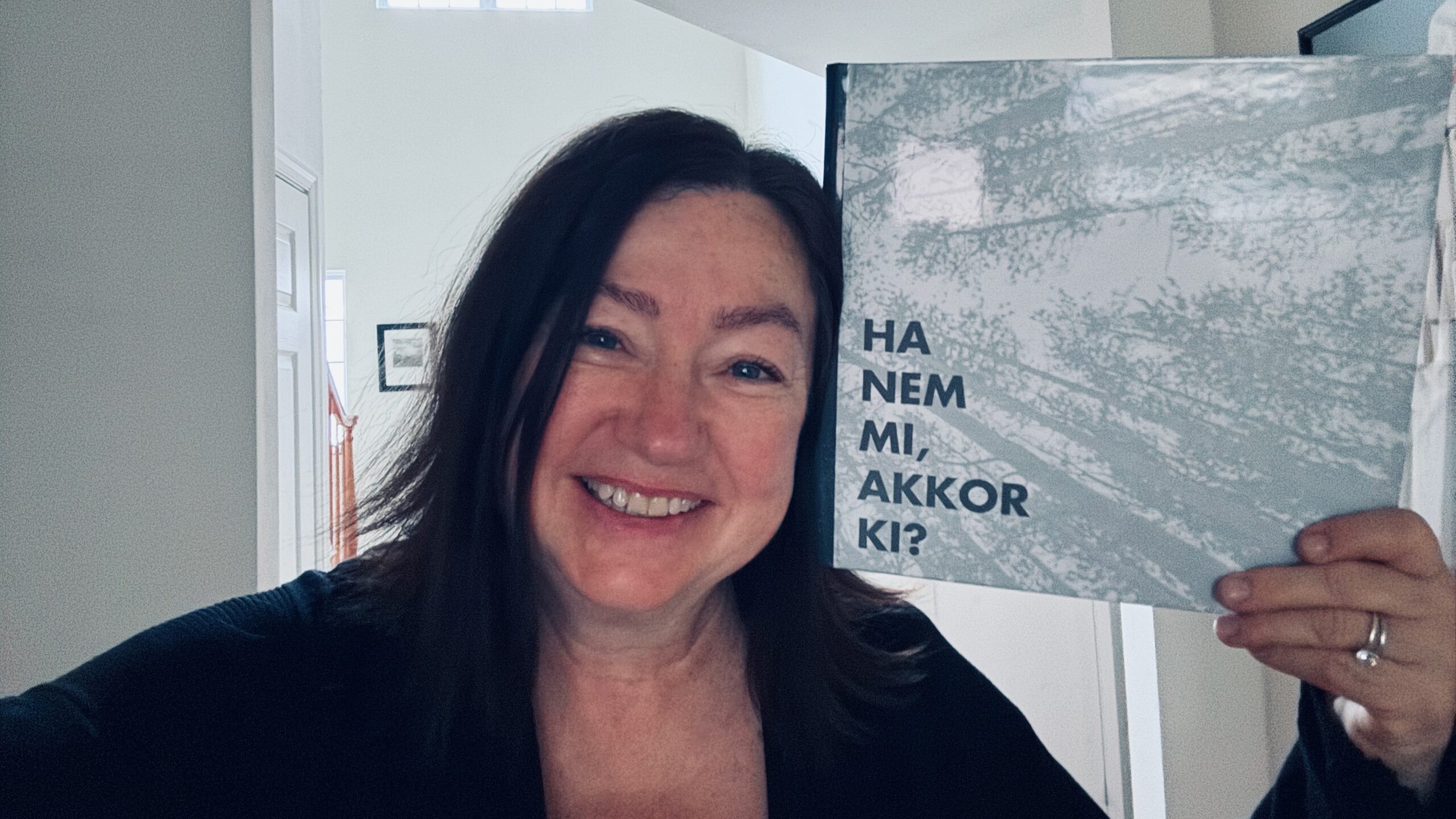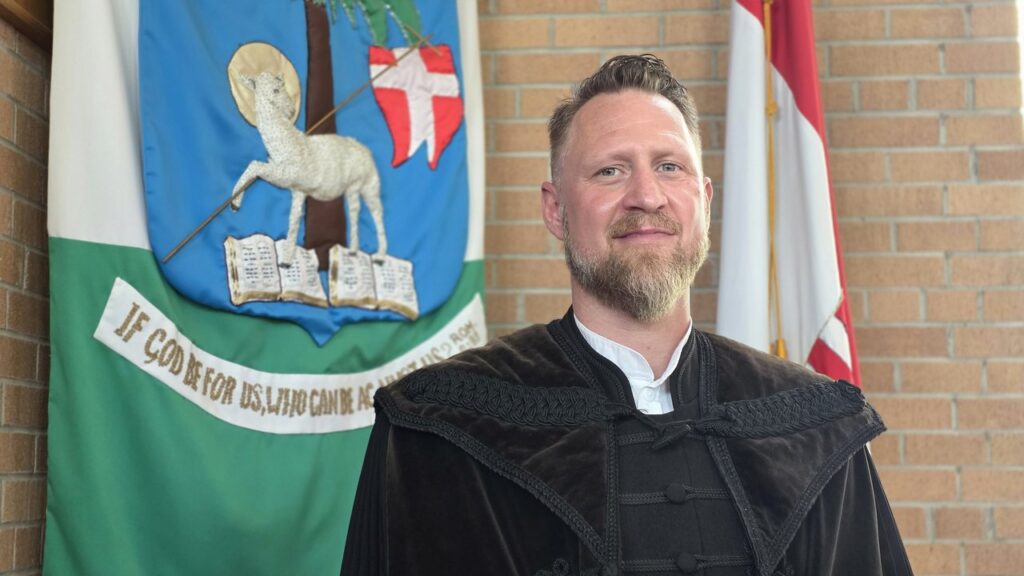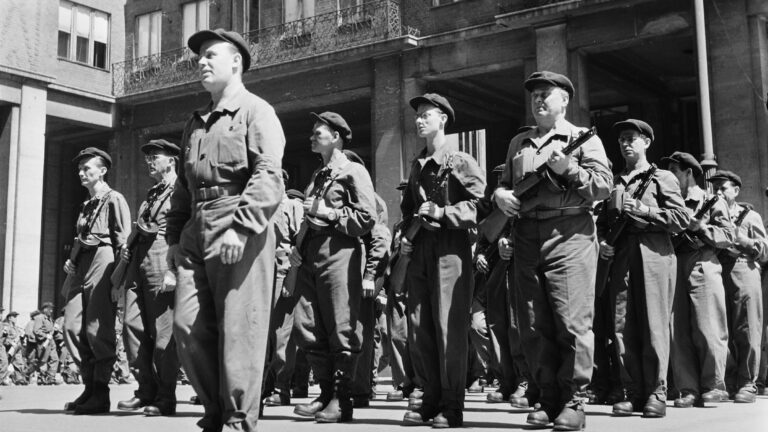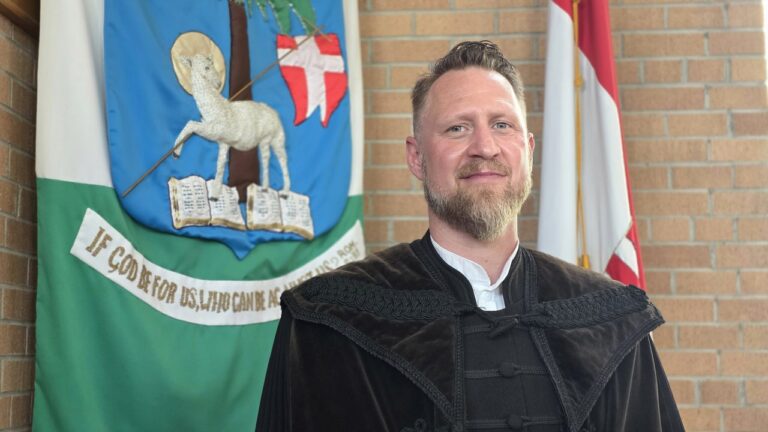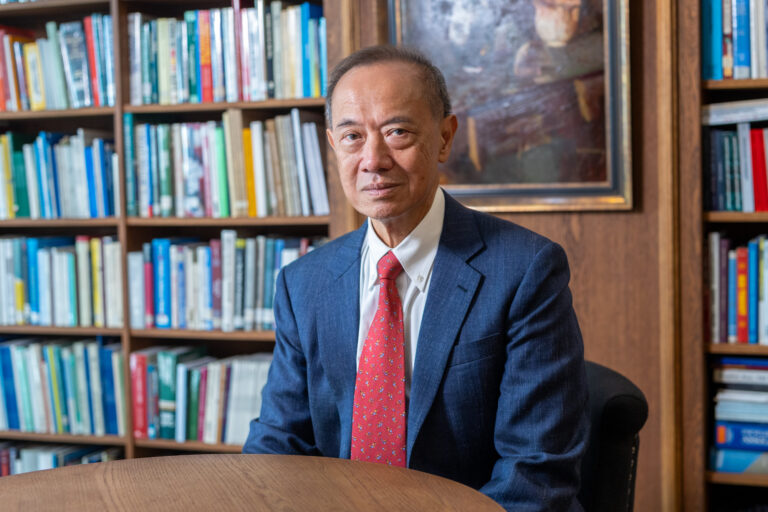Irén Dala was born in Toronto, and moved to the United States following her husband, living on both the East and West coasts. At the age of five, she joined the 42nd Boldog Kinga girl scout troop in Toronto, a member of the Hungarian Scout Association in Exteris (KMCSSZ). Her initial experience has captivated her ever since, and has led to a lifelong commitment with higher positions with more responsibilities. She is currently a member of the four-person presidency, serving as its Chief Officer. She worked as a cardiac RN and is now a teacher’s assistant, and the mother of a 21-year-old son.
***
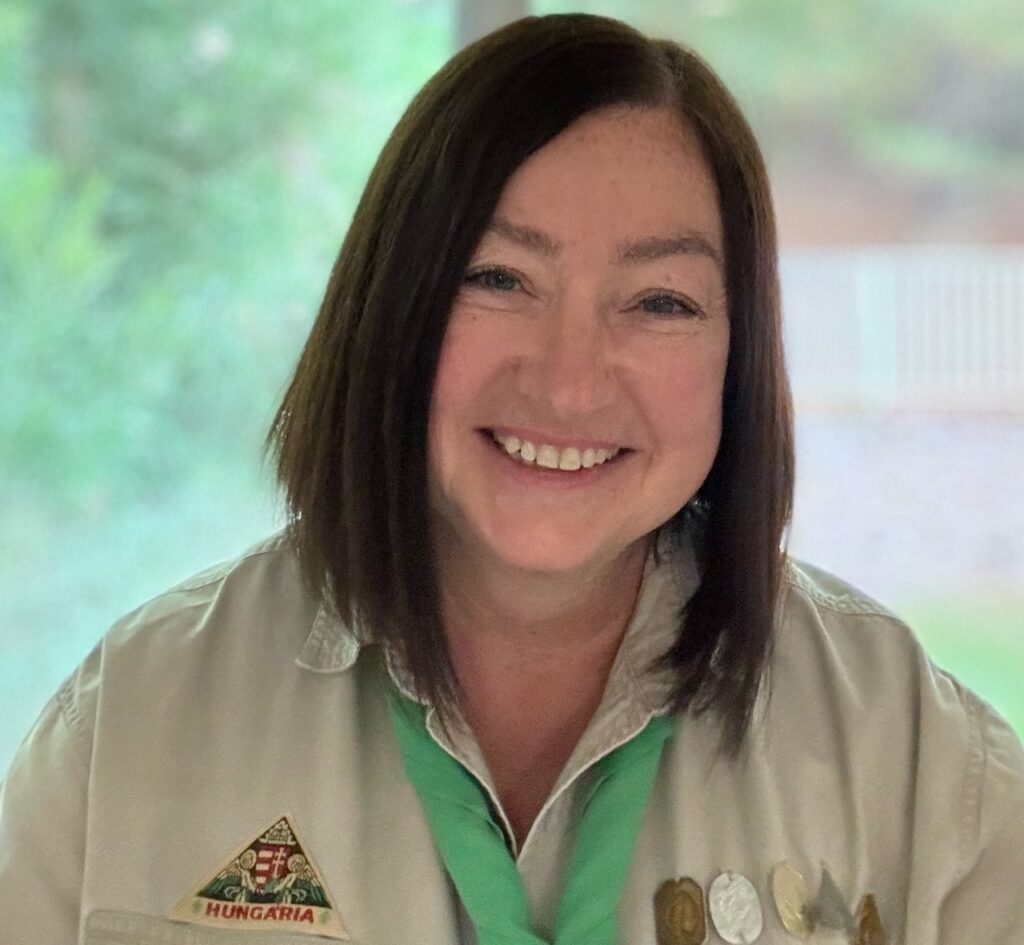
You are a second-generation Hungarian American, right?
Yes, I was born in Toronto, my parents were 1956 refugees. My father left Hungary on his own and settled in Toronto, while my mother came to Hamilton, a neighboring city near Toronto with her younger brother and parents. My parents met at the Hungarian Catholic church in Hamilton, and two years later, they married. I have three brothers, however the eldest one passed away in 2017. I lived in Toronto until I was 37, and then moved to the United States when I got married.
How did you get involved with scouting, which has been such a defining part of your life since then?
Just like my siblings, my parents enrolled me in the Hungarian school and scout troop at St. Elizabeth’s Hungarian Church in Toronto. We regularly attended Mass, where my brothers served as altar boys, and we also participated in the youth club activities there. Starting in kindergarten, each of us completed eighth grade at the St. Elizabeth’s weekend Hungarian school. I continued my studies in Hungarian, at the Helikon High School, which was and still is the only weekly high school of its kind in North America. The credits I earned there were accepted at my Toronto high school, so I graduated with four additional foreign language credits.
St. Elizabeth gave home to two scout troops: the 42nd Boldog Kinga (now St. Kinga) Girl Scout Troop and the 20th Árpád Vezér Boy Scout Troop. Back then, the meetings were held at different times: the girls’ meetings were on Wednesday evenings, and the boys on Thursdays. In addition, there was Hungarian school every Saturday, Mass on Sundays, and often some social event afterward. It was a huge sacrifice for my parents to take us to the Hungarian church three or four times a week, which was a 30–40-minute drive each way. I loved the Hungarian school, but it was through scouting that I entered a world that enchanted me from the age of five. That’s where I found my place. I really enjoyed that we were organized into patrols, all girls, with older girls guiding us, and we had great programs. My brothers also enjoyed scouting, but they eventually stopped as they were studying music intensely from a young age. I’m proud to have not one, but two conductors in my family! I too studied piano for ten years, flute for three and sang in the school choir, but didn’t pursue it professionally. In a way, scouting became ‘my place’, where I could flourish without my brothers.
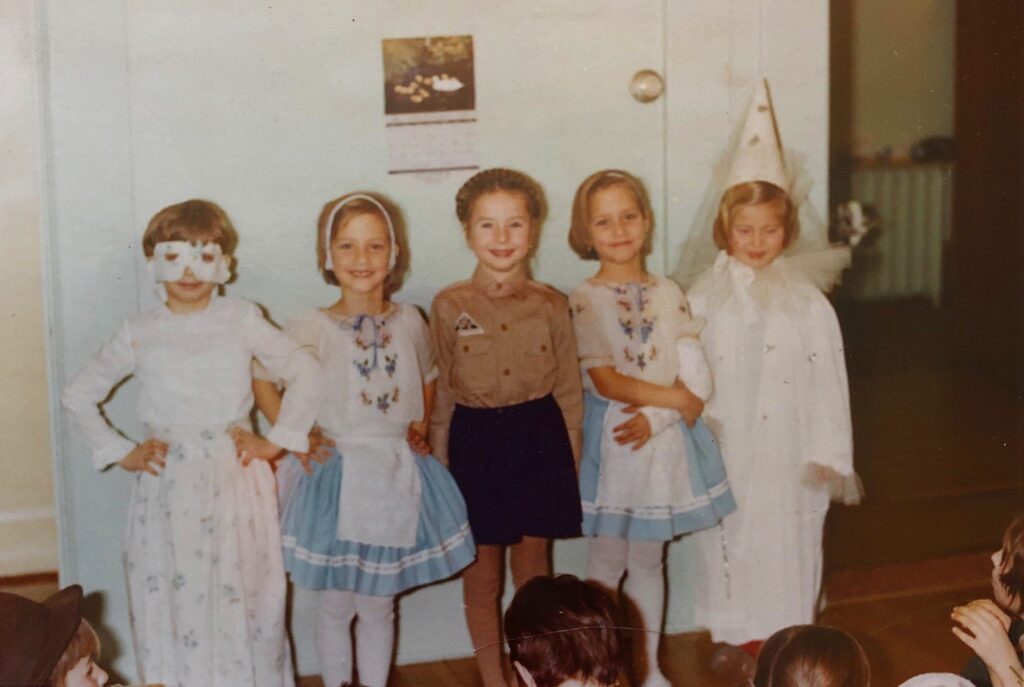
Is it fair to say that your best friends were also Hungarian scouts?
These days, a lot of people talk about dual linguistic identity, but for us, it never felt like a sharp division. It was natural that we were Canadian Hungarians, attending English-language school and Hungarian scouting during the week, and going to Hungarian school and church on weekends. There was no confusion about our identity. I had friends in both linguistic communities, and they knew about each other—it was all very natural for us. However, my best friends were and still are Hungarian, especially those with whom I spent years scouting and sharing so many experiences. I have a couple of very good friends from my English-language high school, but I don’t keep in touch with any of my university peers.
But my Hungarian scout friends remained close for decades. And it wasn’t just the enchantment of scouting that kept us connected, but also the fact that from adolescence, we began attending central competitions and summer leadership training camps at the Sík Sándor Scout Park in Fillmore, New York, where we met many other Hungarian scouts from other cities, even other countries. It was a wonderful feeling that by the second day of camp, we felt like we had been friends for a hundred years, even with those we had just met—because we had the same customs, the same programs, and we sang the same Hungarian folk songs… I could never find this kinship anywhere else but in scouting. I had friends in Hungarian school too, but it was different. As a young girl, I took ballet classes and even tried folk dancing, but I didn’t find my happiness there. The circle of friends wasn’t the same as in scouting, where most friendships last a lifetime. I’ve been scouting for over 50 years, and the magic I first felt still lives within me. Whenever I go to a camp, even with new leaders, I feel like I’ve known them for a century…
You started at the Toronto troop at the age of five, and now you are a member of the KMCSSZ presidency. What has happened over the past 50 years?
I’ve worked my way up the ranks: I started as a cub scout, then continued as a junior patrol leader, had my own senior patrol, completed the assistant leader training camp, and led the scout team for years. Afterward, I became the Toronto girls troop leader, then the Toronto district commander. Later, I became a member of the KMCSSZ Board of Directors, and then its presidency. In short, I’ve pretty much done everything and taken part in everything.
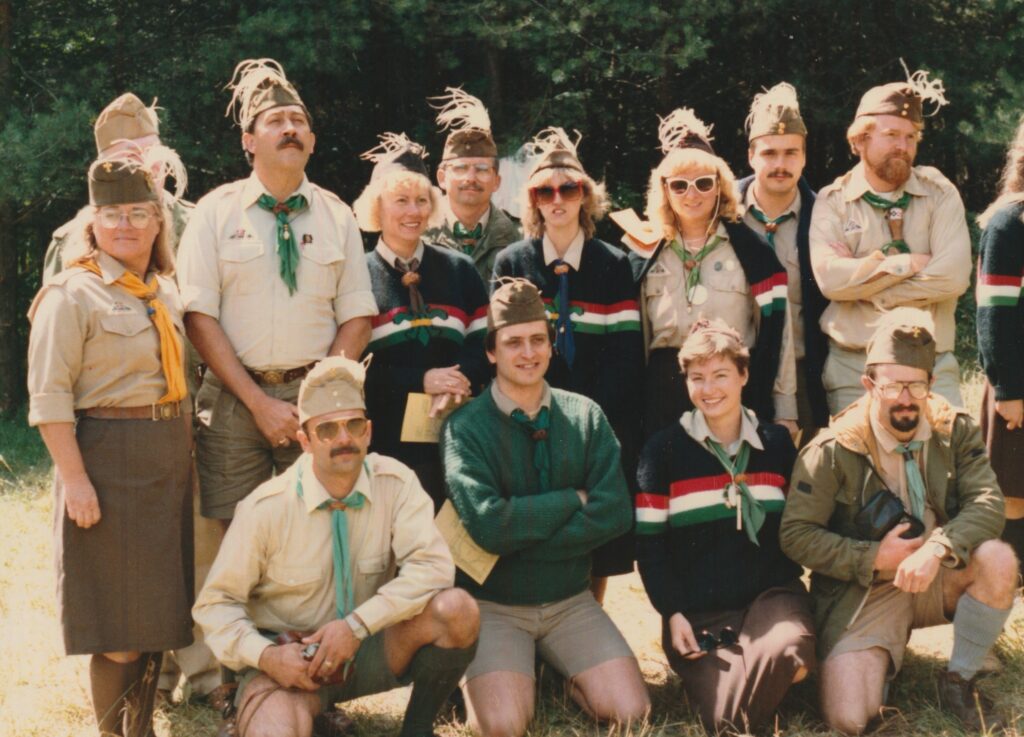
What did you do in your civilian life during this time?
I studied nursing because I’ve always had this desire to help others. That’s probably why scouting resonated so much with me as well. For a while, I thought about becoming a teacher, but I changed my mind and completed my education in nursing. I worked in different fields, then enrolled in continuing education in cardiac nursing. I worked as a cardiac RN, which I truly enjoyed, for several years. However, working 12-hour shifts and all the sickness and deaths took a toll on me… When I left Toronto, I left my nursing career behind.
Did you meet your husband through scouting?
Yes. I met my husband, Tamás Péter, when I was 15, and he was 16. He was born in and lived in New Jersey, on the East Coast of the United States. We first met at the Fillmore junior patrol leaders training camp. Of course, this was before the internet, so after the camp, we took to letter writing for a few years because long-distance calls were expensive back then. We each finished high school, went our own ways to college, and lost contact. 20 years later, we reconnected. He was working in Europe, and not particularly active in scouting, but his name was on a mutual scout friend’s email list. When I saw that, we started writing to each other again, and the rest, as they say, is history.
When we got married, Péter was living in San Francisco, so one of us had to move, and we decided that I’d leave Toronto and move to the United States. We lived in San Francisco for two years, then moved to the East Coast to New Jersey, where we lived for thirteen years, and where our son Henrik was born. After that, we moved back to California for a year, then back to the East Coast again. Mostly due to a need for change, and Péter’s work as an IT professional, it was a great experience for our son to spend a year learning about a completely different lifestyle. Henrik will be 21 soon, he’s at university studying math; we’ll see where life takes him, and of course, where it takes us too: for now, we’re staying in New Jersey, but who knows when our next adventure will begin…
Your husband was born into a scout family, if I remember correctly. Did your son catch the scouting bug, growing up with two such scout parents?
Yes, my father-in-law, Tamás Tamás, was the first trained scout leader of the New Brunswick boy scout troop. My husband is also in a family of three boys and one girl and they all scouted too. Péter went to university in Philadelphia, and since getting his MBA, he has been working in the computer and financial world.
Yes, Henrik really enjoys scouting. He was very active for a long time, but since becoming a university student, his time has been limited, and he can’t invest as much time in scouting as before. However, he plans to complete the junior scout assistant leadership training this summer. His best friends are Hungarian scouts. For a third generation, he speaks Hungarian well, and proudly embraces his Hungarian identity. In school, for example, he often wears T-shirts with Hungarian inscriptions, like the one from the Balassi Institute. He lived and studied in Hungary for a year through the Balassi scholarship program and loved his time there. We have many relatives in Budapest and throughout the country. My father-in-law was in a family of eleven siblings—the family is quite large…
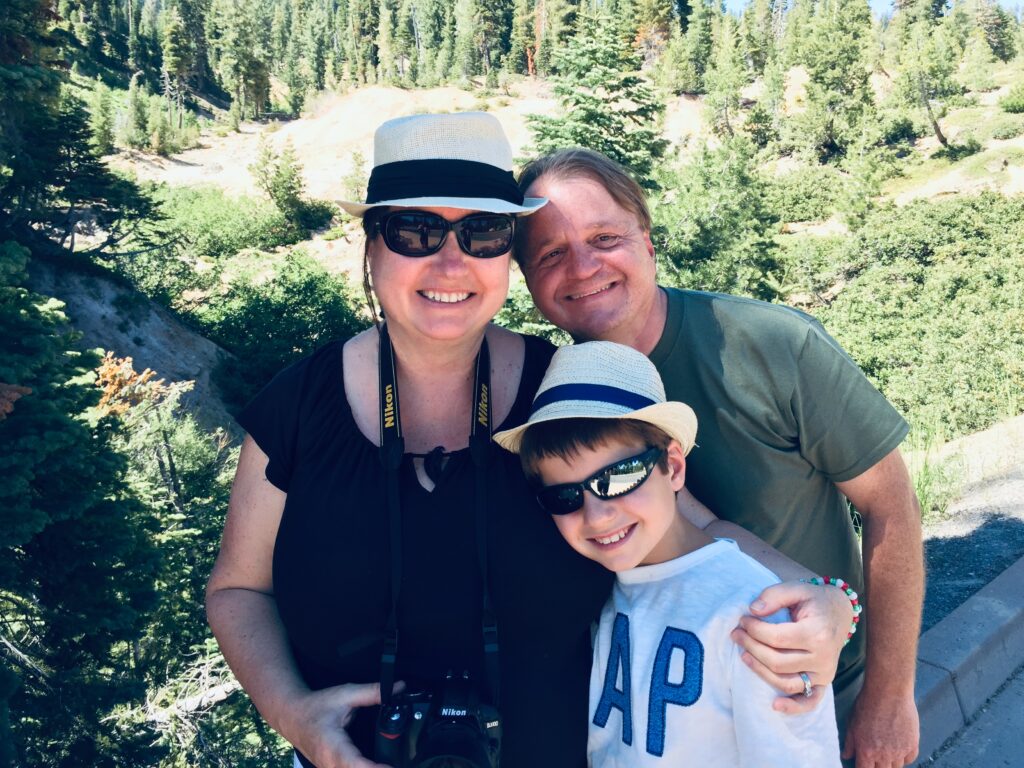
If I’m right, none of the usual things like university, work, or moving affected your scouting life, as often happens to others…
I know that here in America, it’s common for young people to go to universities far from home, and many stop scouting during that time. But the truth is, I never felt that way. I never wanted to go far from Toronto; and precisely because I didn’t want to leave scouting. I always found time for it, even alongside my university studies. Maybe I didn’t take on as much as I had done earlier, but I was still quite active with the troop during my college years. When I moved to America, I joined the San Francisco troop, where my husband was the troop leader in his final year. After we moved to the East Coast, the nearest troop was in New Brunswick, so that is where I became a member. I was active for a time being, though less so now. If needed, I still help out, but with my chief officer workload and full-time employment at a school, it’s hard to do everything!
You are part of the presidency of KMCSSZ and the Chief Officer. What does this exactly mean?
In practice, I’m responsible for the annual central obstacle course and the central leadership conference. Both events are organized and run by younger leaders. It feels great to see that these young people are enthusiastic, responsible, and do their work well, encouraging other young leaders to do the same. I don’t like micromanaging; I’m there for them for guidance: if they need advice or have any questions, they can always come to me. I have a very good relationship with the young leaders, we work well together, and we mutually respect each other. It’s encouraging to see that KMCSSZ has a future. Scouting is a youth movement, everything is done for the youth, but there’s always a place for you at any age; there’s always something you can help with, something you can take on—the older, experienced leaders are always needed, for example, to mentor the younger ones.
For those who don’t know, could you briefly summarize these events?
The central obstacle course is organized by KMCSSZ every spring at the Scout Park in Fillmore, NY, but there are other obstacle courses as well, for example, there was the first one on the West Coast last year, and obstacle courses are also held in Europe. These all work with a theme—it could be a short story, a video, or any subject that the scouts learn about. The obstacle course is a physical trek with stations related to the theme, and the scouts go through it while their scout knowledge is assessed. For example, last year’s theme was famous Hungarian women, and one station involved writing a letter to Sarolt’s son Stephen in secret code (runic writing).
The central leadership conference is held every first weekend of November, and we invite all assistant leaders, scout masters, or adult scouts over the age of 18. In addition to the central conference, each district has its own troop leader, officer, district, etc. conferences. There are always topics to discuss, and of course, games and conversations. Last year, for example, one of the topics was communication: how can we communicate better with parents; how can a young person communicate with an older parent or another young person; what communication problems exist; and what’s the best way to communicate today. Because in our time it was very different, but today there are many ways to stay in touch with parents and leaders: some use text messages, others use WhatsApp or Facebook groups. The conference is now held in our scout park in Fillmore. For over 40 years, it was held in Buffalo, NY. Three years ago, we decided that since we had a new building equipped with a conference room, we would move it to this location.
What other tasks do you have as part of the presidency circle?
We have board meetings every two weeks, usually on Wednesday afternoons, online. Sometimes we can cover all the topics in half an hour, and other times, after two hours, we’re still sitting in front of the screen, which is a significant time challenge for everyone… In addition, I’m responsible for the scout knowledge entrance exams for the leadership training camps. Along with updating the exams, my project is to find a way to conduct the written part—not the practical part, only the written exam—online. At first, it might sound easy, but we must remember that in KMCSSZ, everyone is a volunteer, so the hours we can dedicate are variable.
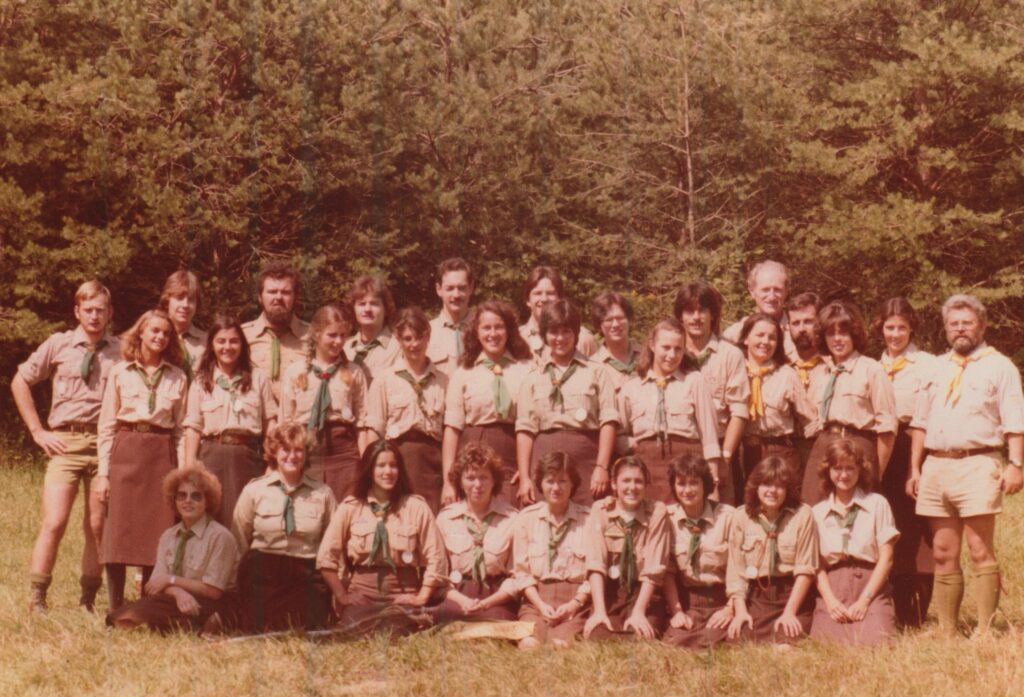
According to KMCSSZ’s webpage, you have another position…
Since KMCSSZ is a member of the Hungarian American Coalition (HAC), I represent the association there. Last year was the first time I attended the HAC Saint Nicholas dinner, and the following day, I was also present at the HAC board meeting. Representation means informing the coalition’s member organizations about our work, the latest developments, spreading KMCSSZ’s good name, etc.
You had an important role in the recent Jubilee (Jubi) camp as well.
Yes, in the 2024 Jubi camp, I led the eight-person logistics group, which worked very closely with the camp staff and the camp director. We were basically responsible for everything that kept the camp running, from the kitchen to the technical crew to the patrols. Two years before the camp, I got in touch with the head of kitchen services, Edith Ottó, who, together with her family, has been running the camp kitchen for over 50 years. Edith and I were in the same scout patrol as they were also members of the Toronto troops. They have such an established system that I don’t dare interfere; I just let her know if she needs help, I’m there. We started the conversations about how many people to expect, what the situation was with the newly built kitchen and new equipment, what else they might need, etc. Gyuri Kovács leads the technical team, and they take care of the procurement and installation of equipment. And of course, we had regular meetings with camp director Eszti Pigniczky, sometimes weekly.
Of course, we had work during the camp as well, like being responsible for cleaning the bathrooms, which is not a pleasant task, but someone has to do it. There’s a farmer living near Scout Park who accepted our offer to take the food scraps, so every day we had to deliver the leftovers to him. I invited everyone to the logistics team by saying: if you’re willing to take on such tasks, you’re welcome to join the group. Maybe that’s why we had such a great team. We were also part of the St. Stephen’s ‘Build a Country’ theme, with our green caftans. When we had time, we visited some subcamp campfires as well. We do all this to make the camp experience great for the scouts. But the most important thing is that leadership is primarily by example. I would never ask anyone to do something I wouldn’t be willing to do myself. And sometimes, we had time to rest as well—overall, the camp was a big success.
Afterward, I stayed for three more days at the park, along with a few others. We had to go around, put the equipment in the large storage shed, make sure the rented equipment was picked up, collect and throw out any trash. We went through the entire park to make sure every camp area was clean, and all equipment found its place. By the way, there had been a leadership training camp before, so I actually spent a full month living in a tent. It was a bit unusual, but still a good experience.
I’ll tell you something: I thought the KMCSSZ presidency would never sleep in a tent…
Well, I’ll tell you, when I’m in Fillmore, I prefer to sleep in a tent. (laughs)
Finally, let’s talk about the most recent central Scout Ball.
This was the 50th Scout Ball. In the beginning, it was organized every year, but due to all the work involved, it switched to every two years. I know how much work it is because Gabi Vajtay and I were the main organizers for 14 years. You have to book a place at least a year and a half to two years in advance. There’s no major hotel in New Jersey we didn’t visit to scope out their ballroom, see how it looks, how many people it can hold, and so on.
The Scout Ball has always been a well-run event, but it didn’t raise a lot of money. When Gabi asked me to organize it together with her, and to take it in a slightly different direction, I said yes because we work well together. For example, later, in 2018, we launched the first ever Hungarian Christmas Market together at the Hungarian Museum in New Brunswick, NJ, which has since become an annual event. Although over time, I learned that when she calls, it’s not always worth picking up, because after that, you can’t say no… (laughs)
Before we took over the ball’s organization, the amount of money raised was relatively small per event. We’ve always held the ball in elegant venues, so the costs are significant. When we took over, we had many ideas, including setting a specific goal: if we’re already investing so much time, effort, and energy into it, it should have some financial benefit as well. Also, because people tend to donate more freely when we’re raising money for something specific, like a new infirmary, or scout barracks, like we did last time. Another thing we focused on was searching for potential sponsors—both to cover the costs and for fundraising. Our plans came true beautifully, and during the first scout ball as co-chairs, we raised $30,000, totally benefiting the association. Since then, we always have a specific goal and quite a few sponsors. I think we’ve probably had every central scout park building as a goal for the ball at some point… In addition, of course, there are separate fundraisers as well. Other leaders and groups are still raising money for the younger scouts’ barracks, and we’re very lucky because there are always donors, and among them, there are always generous ones.
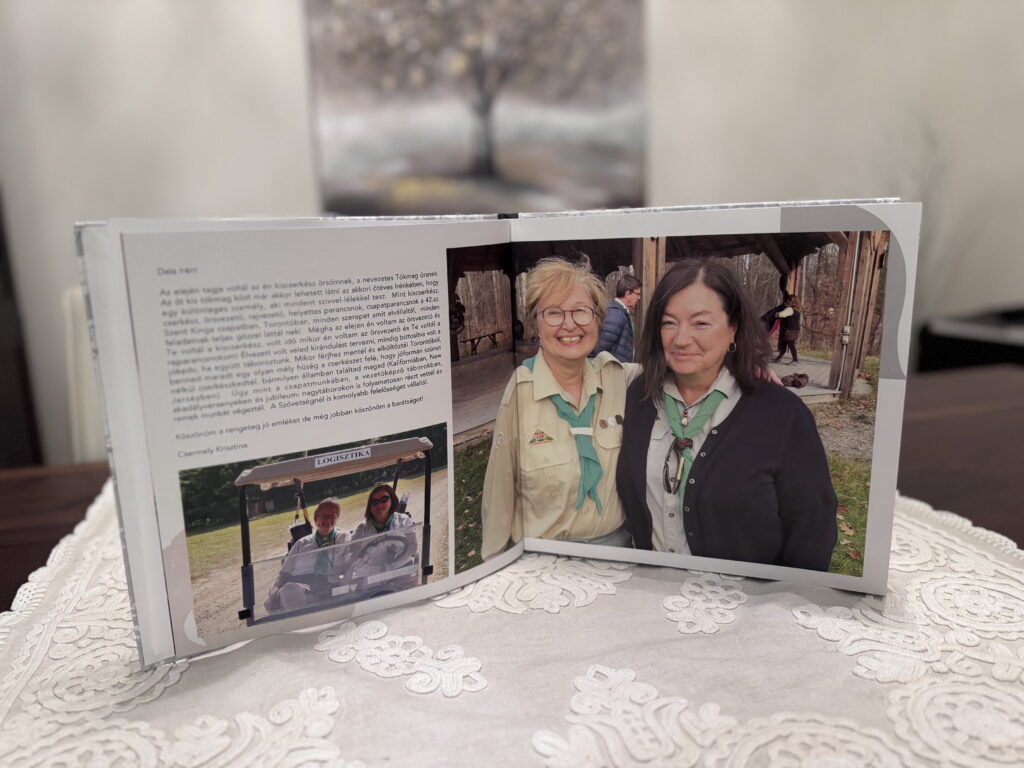
Last year, you handed over the organization of the ball, and you became a guest of honor.
Yes, we felt it was time. In our leadership training, we teach that you should stop when things are going the best. Plus, we want to focus on other things, so we handed over the organization to Zsuzsa Kovács from New Brunswick, NJ.
Yes, at this ball, I had the honor of being named the guest of honor. This title usually goes to a scout leader with years of service or someone who has actively supported scouts. By doing this, they recognized my work, not primarily for organizing the ball over the years, but for my entire scout career. I’ve never worked for awards, and in fact, I don’t really like speaking about myself, but it felt good to receive the recognition, and of course, it gave me some motivation for the future.
You mentioned that, as a young adult, scouting wasn’t the only form of community work for you…
I was very active around St. Elizabeth’s Church when I was younger, and I really enjoyed it. For example, I was a member of the parish council for several years. My life wasn’t only about scouting, which I think is important. The church placed a great emphasis on having young people on the council, not just older people, and having girls and women, not just boys and men. There was also a scout representative on the council, someone elected to represent us. I was elected several times. It was great to get to know the church, its community, and the people better as an ordinary believer, and I learned a lot about why we do what we do. As a council member, I felt like I was more part of the whole church community, almost like a family.
Last question about the changing relationship between church and scouting. In Toronto, it’s clear, but it’s not the same everywhere. How do you see it?
There are still a few cities where a Hungarian Catholic Church is the official sustaining body for the local scout troop. This is also the case in Toronto, although in the past, there were three scout groups there; two at the church, and one at the Hungarian House. Nowadays, in most places, the sustaining body of the local scout group is a Hungarian civil organization or the parents themselves. What’s important is that, regardless of who the sustaining body is, the local troops are part of KMCSSZ and follow its rules. The association leads the troops, not the sustaining body, although every local troop works closely with its own sustaining body, whether it’s a church or another civil organization. Another thing they all have in common, regardless of religion, is that every scout accepts the Scout Law.
Another important point is that scouting’s goal is character development, not religious education. The Forrás group, which was established a few years back, works to incorporate God-given values and virtues in practical ways for the scouts, because we would like for everyone to have some sort of connection with God. We’re aware that the world has changed, so expecting every scout to be religious and attend church isn’t realistic. But we do integrate faith in God into our scout work. No matter where someone is in their faith journey—whether they’re religious or not, starting out or searching—, our value system is for everyone. Here’s a simple example of this in practice using the virtue of helping others: a younger scout can help set the table at home, while an older scout can help prepare part of the meal. As they grow in age, the value system is calibrated at a higher level for them.
Read more Diaspora interviews:

